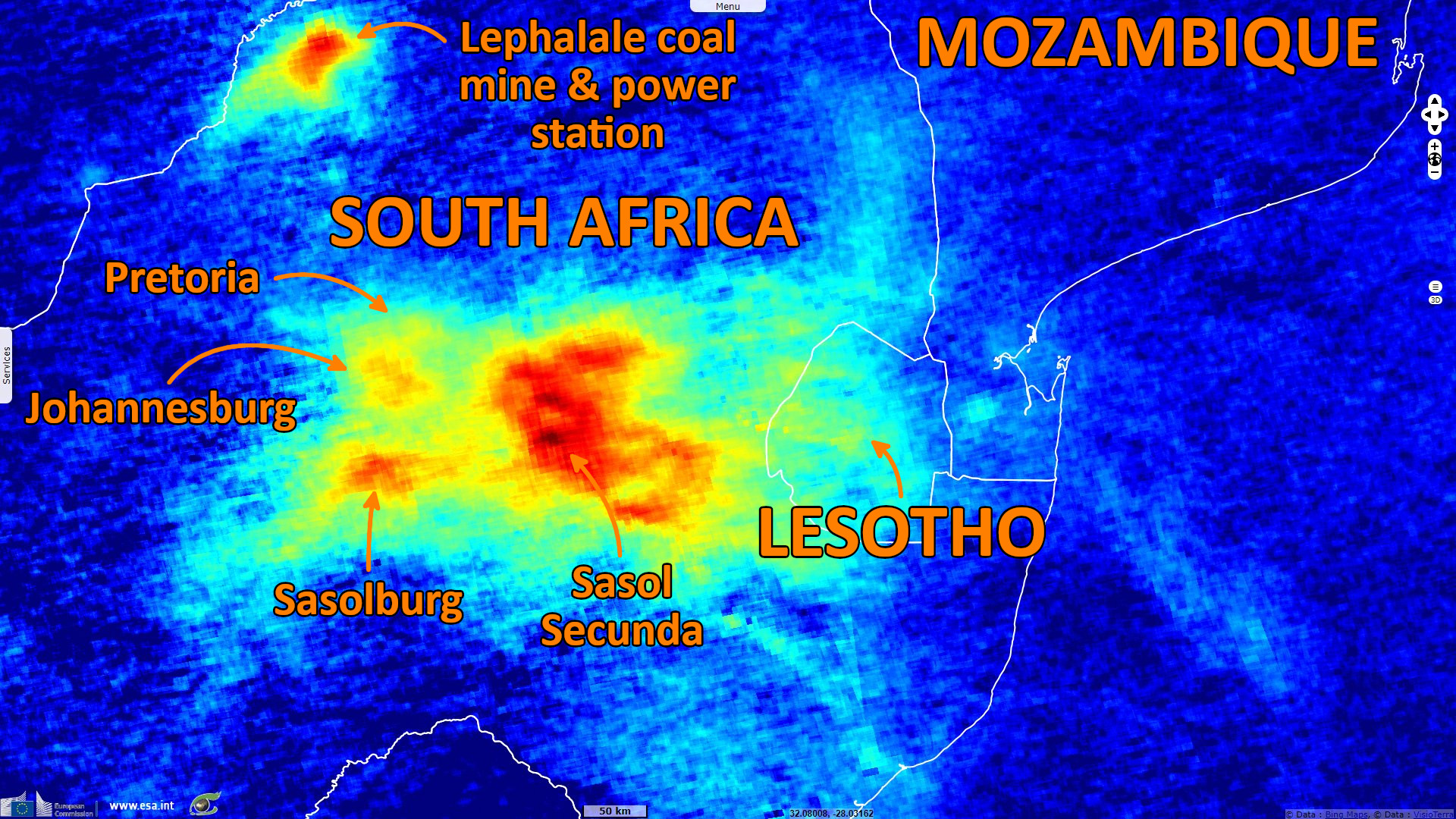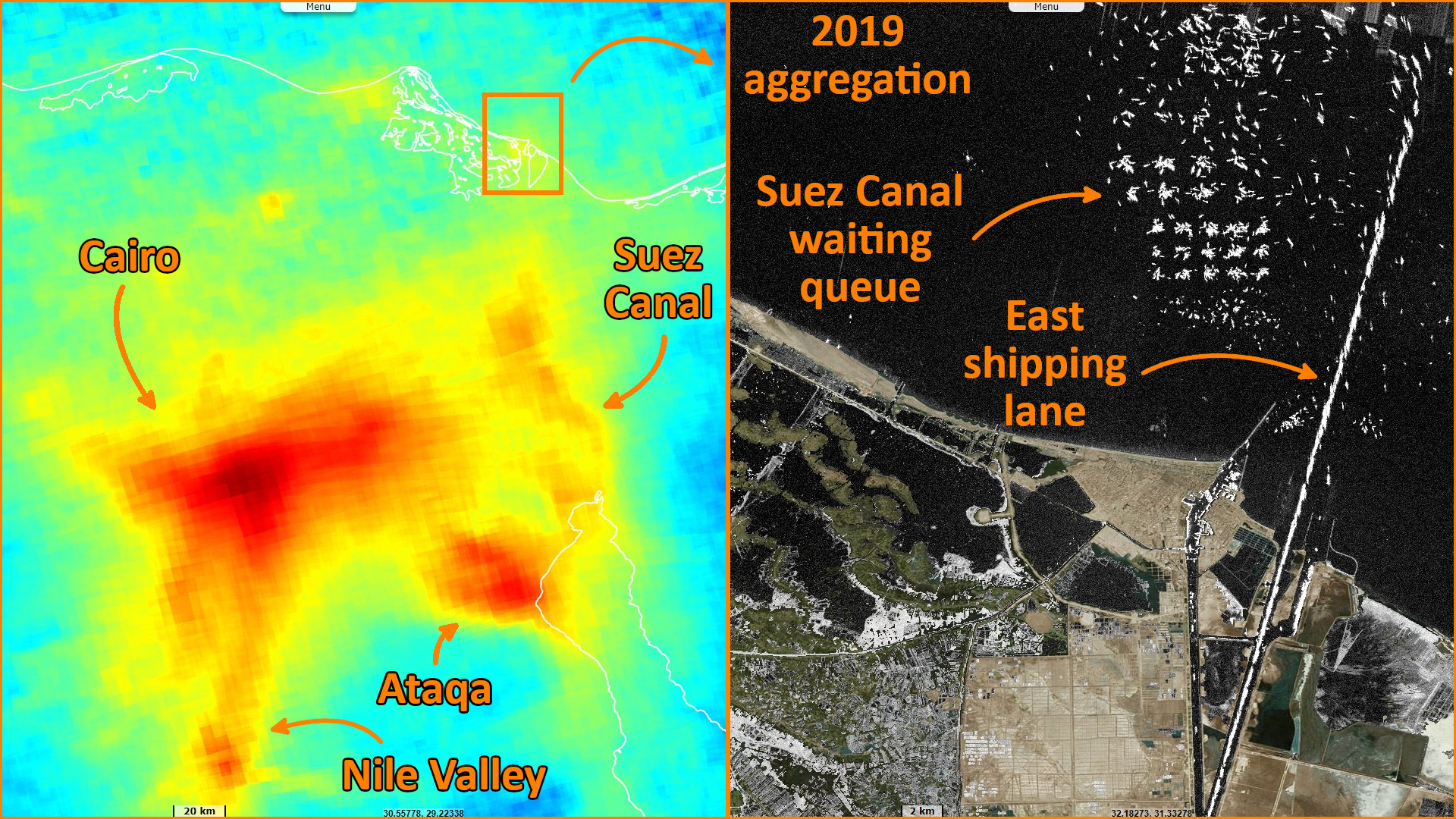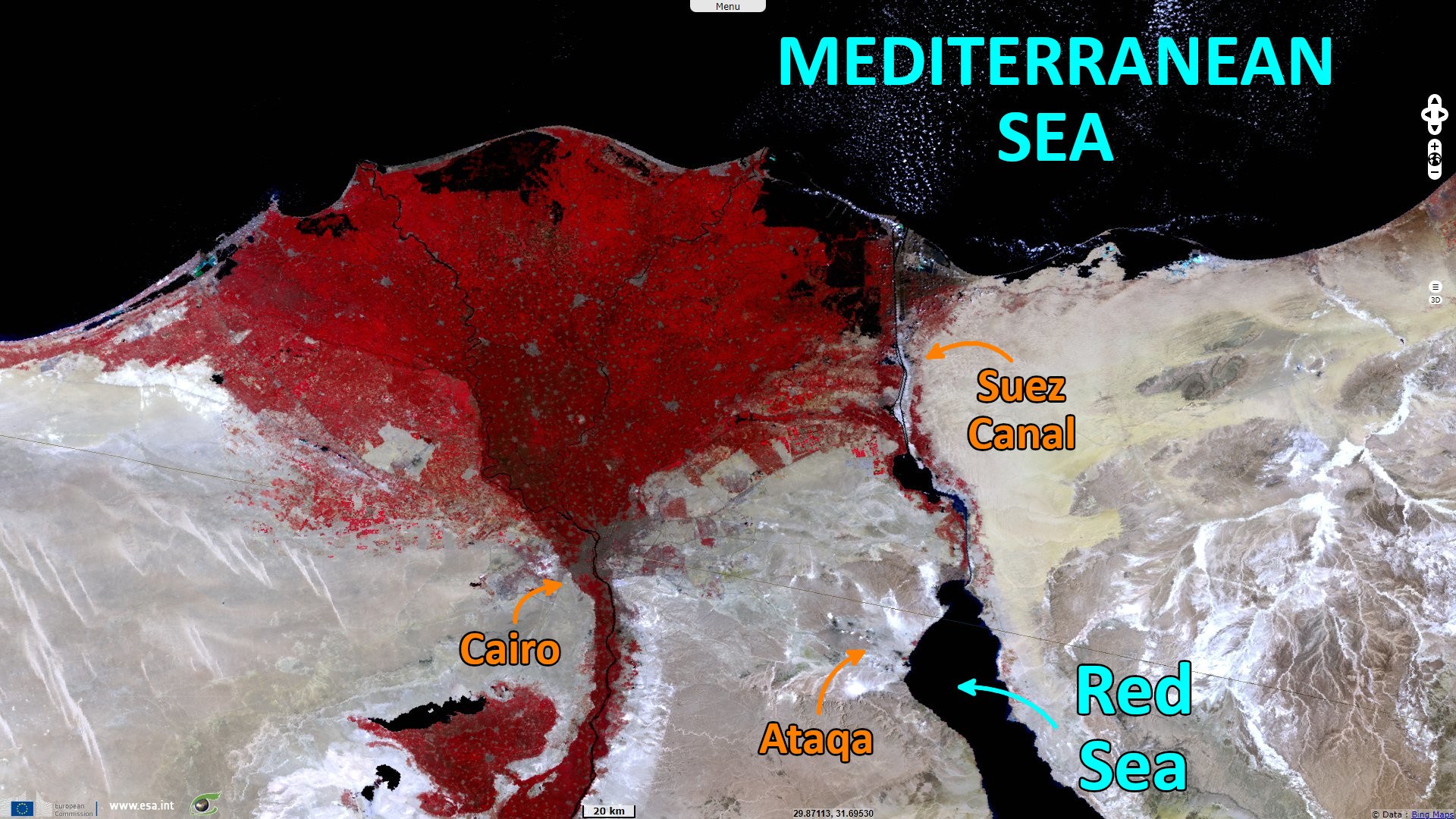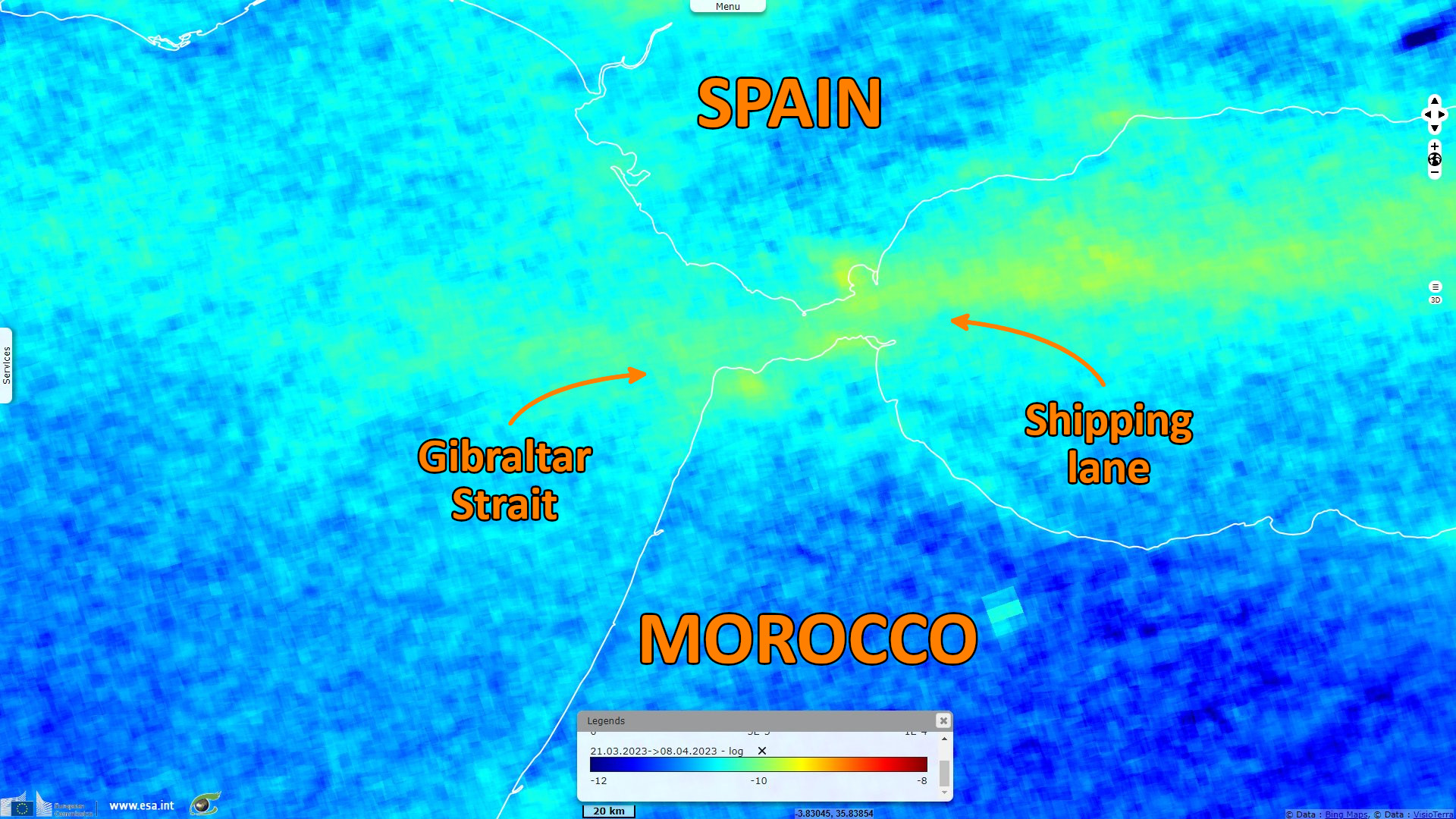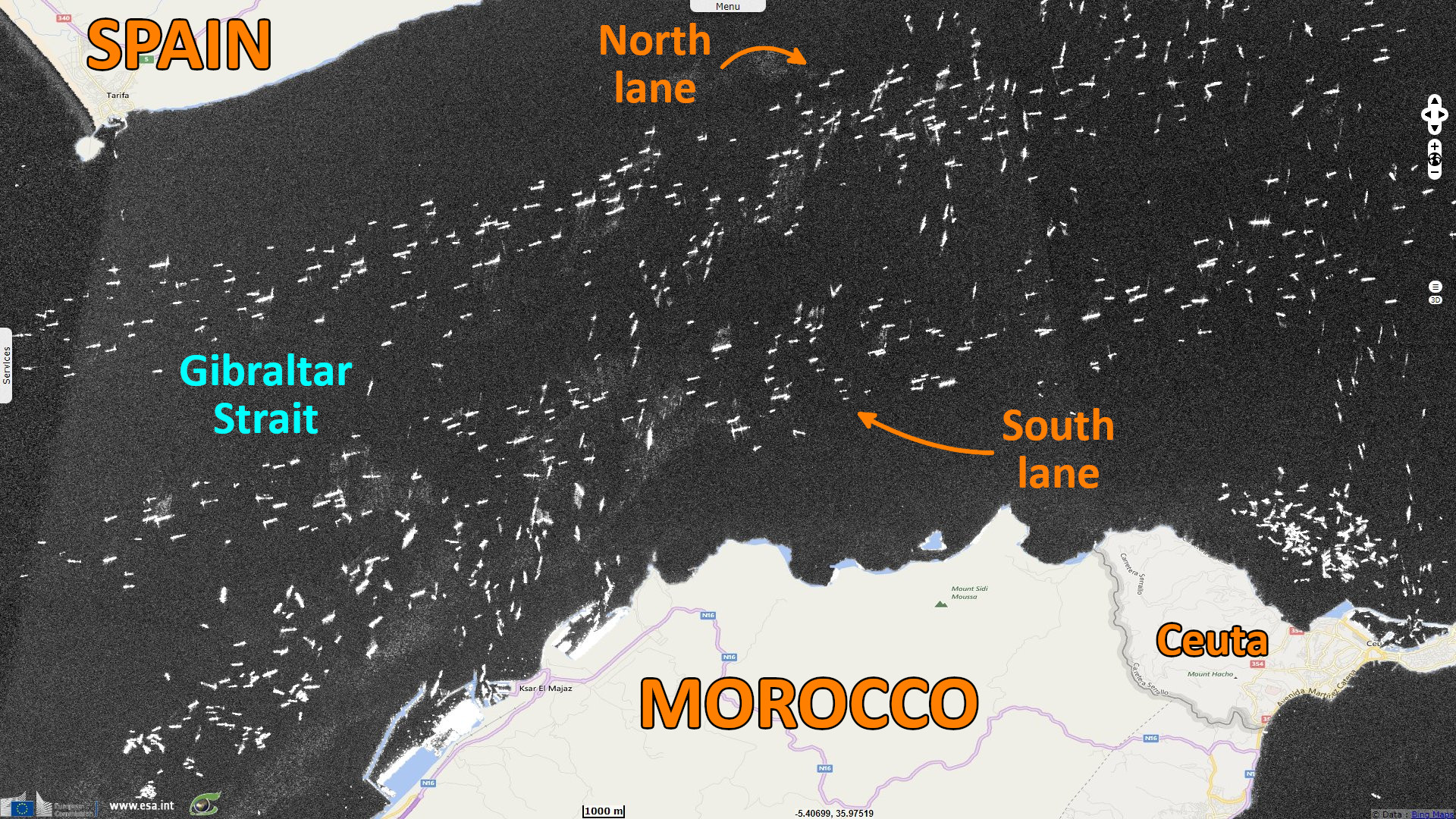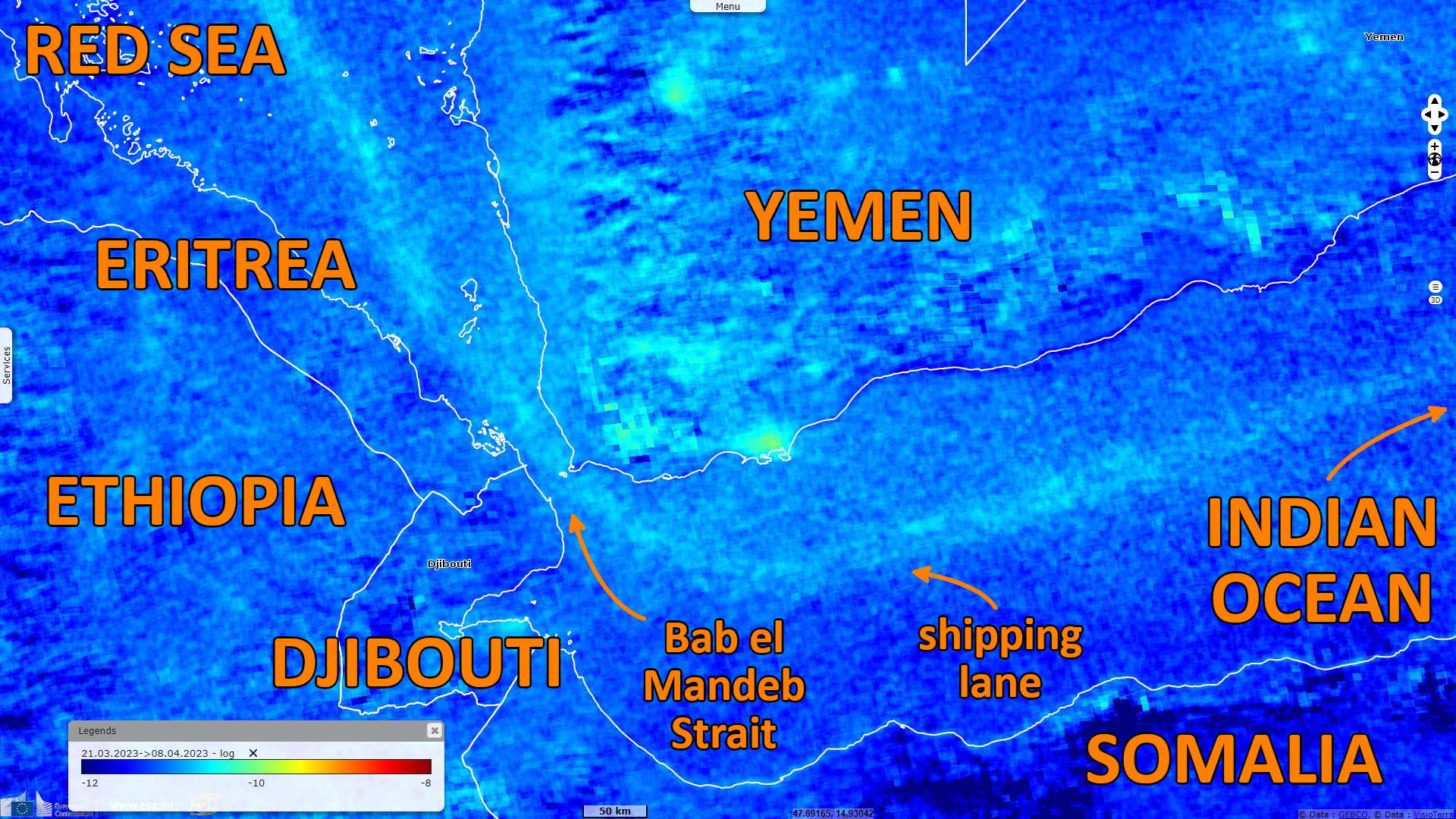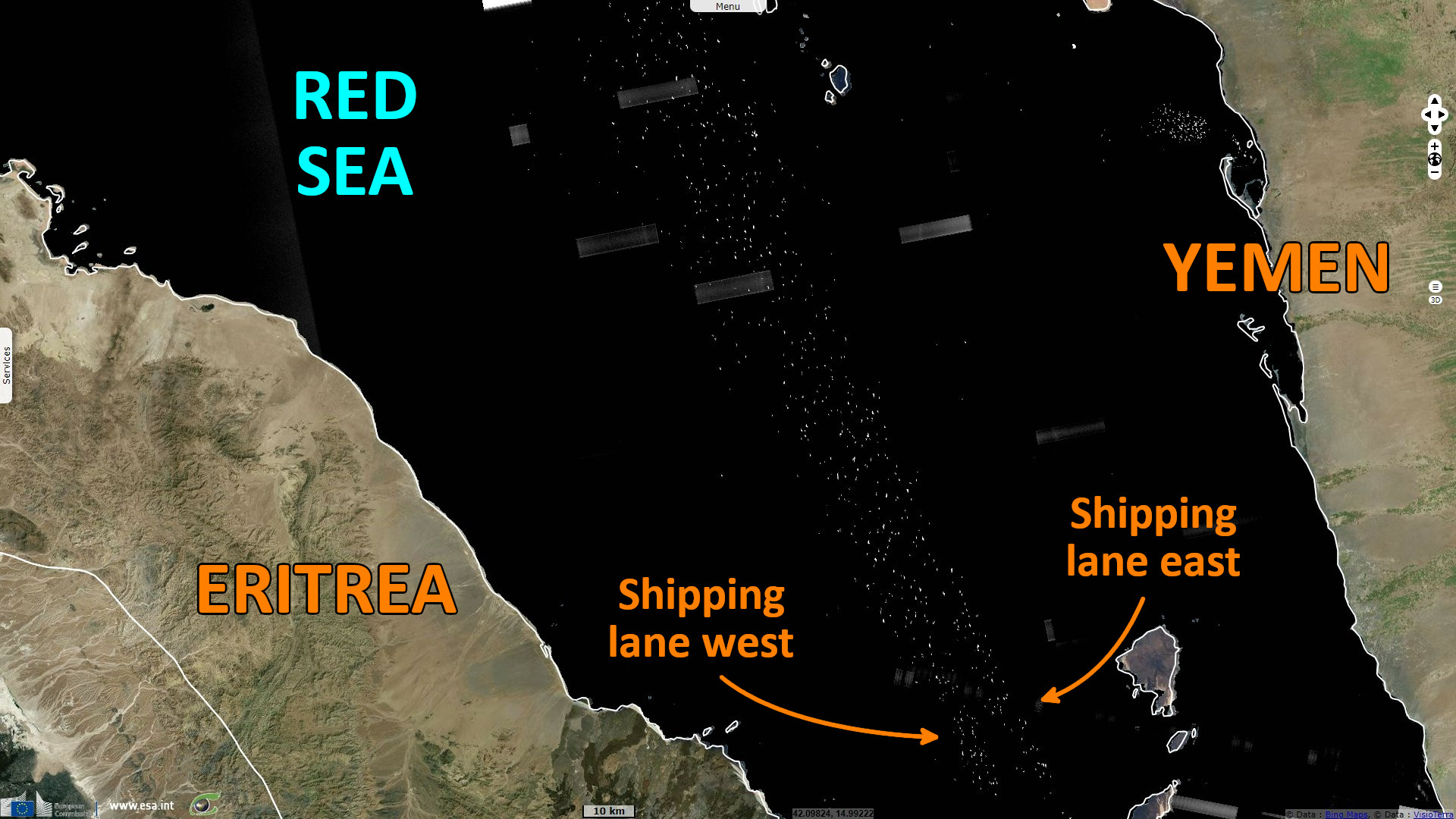Major contributors to the air pollution by nitrogen dioxide on the African continent
Sentinel-3 OLCI FR acquired on 28 August 2021 from 08:07:07 to 08:10:07 UTC
Sentinel-3 SLSTR RBT acquired on 21 January 2022 at 08:30:57 UTC
Sentinel-2 MSI acquired on 20 March 2022 at 11:21:21 UTC
Sentinel-1 CSAR IW acquired on 21 December 2022 at 06:28:00 UTC
Sentinel-5P TROPOMI NO2 acquired on 08 April 2023 at 13:47:46 UTC
Sentinel-3 SLSTR RBT acquired on 21 January 2022 at 08:30:57 UTC
Sentinel-2 MSI acquired on 20 March 2022 at 11:21:21 UTC
Sentinel-1 CSAR IW acquired on 21 December 2022 at 06:28:00 UTC
Sentinel-5P TROPOMI NO2 acquired on 08 April 2023 at 13:47:46 UTC
Keyword(s): Atmosphere, air quality, health, pollution, urban growth, transport, marine traffic, coal power, oil and gas, RSA, South Africa, Nigeria, Algeria, Egypt, Suez Canal, Gibraltar Strait, Morocco, Djibouti, Senegal, Sierra Leone, DRC, Congo
Sasol industrial complex of Secunda is the largest emitter of NO2 on the whole continent. It is also the World’s biggest single-site greenhouse gases emitter. It produces coal-based liquid fuels, its energy comes from nearby coal power plants.
The Delta Province does not have the single largest emitters of Nigeria (Abuja and Lagos) but it is the largest contributing province of the country. It may be related to its important oil and gas infrastructures.
The shipping lane of the canal and its queue are well showed by combining multiple images. The density in the canal is such that the lane shows as a long white line, the silhouette of the ships merging together.
Air pollution remains a major challenge in Africa points the United Nations Environment Programme (UNEP): "About 600 000 deaths every year across the continent are associated with this invisible killer. With 23 per cent of global deaths (12.6 million) linked to environmental factors, WHO estimates that air pollution is responsible for 7 million deaths every year."
"Air pollution is caused by harmful particulates and gases, released in high quantities into the air. These pollutants cause disease and death to humans, damage to other living organisms such as animals and food crops, and harm our ecosystems. Air pollution is caused by indoor and outdoor activities though the latter, which is largely a result of burning fossil fuels to produce electricity and to power vehicles, is responsible for most of the world’s air pollution. Large and small scale industrial activities also cause air pollution by emitting substances into the air, which are harmful to human health and are the root cause of many of the respiratory diseases and cancers in humans."
According to GreenPeace, "The world’s largest NO2 air pollution hotspot across six continents is Mpumalanga province in South Africa. The province has a cluster of 12 coal fired power stations owned and operated by Eskom, with a capacity of more than 32 Gigawatts. South Africa therefore has the most polluting cluster of coal-fired power stations in the world. The analysis points to coal and transport as the two principle sources of emissions.increasing the risk of chronic diseases in long-term exposure."

